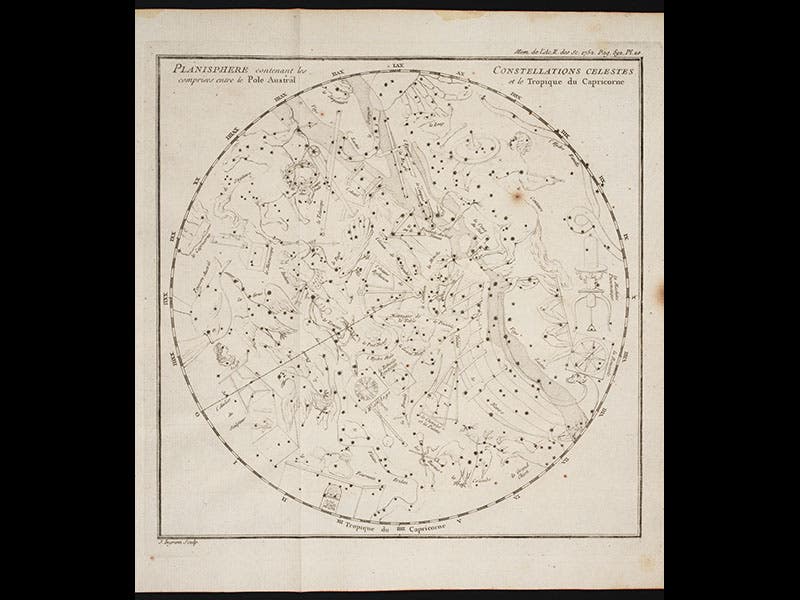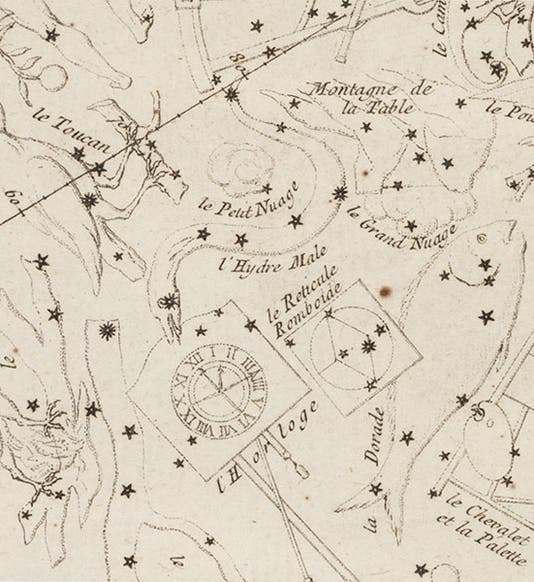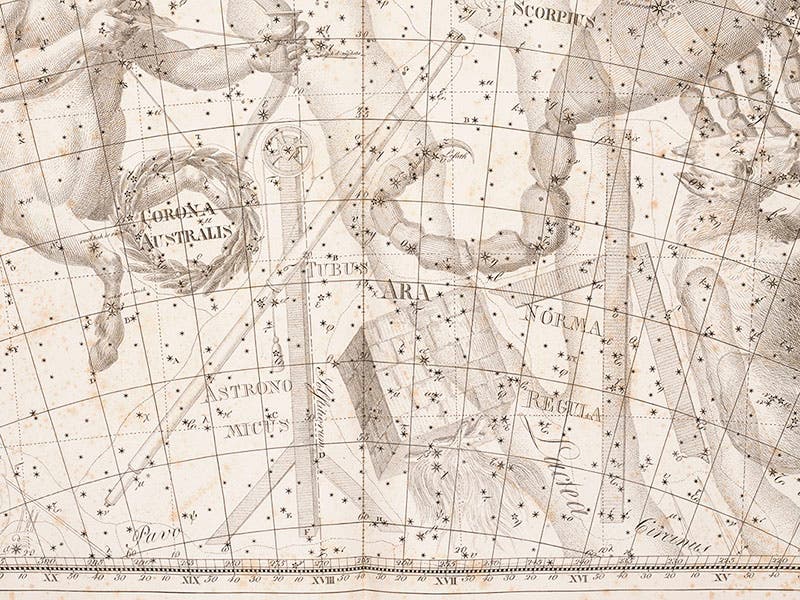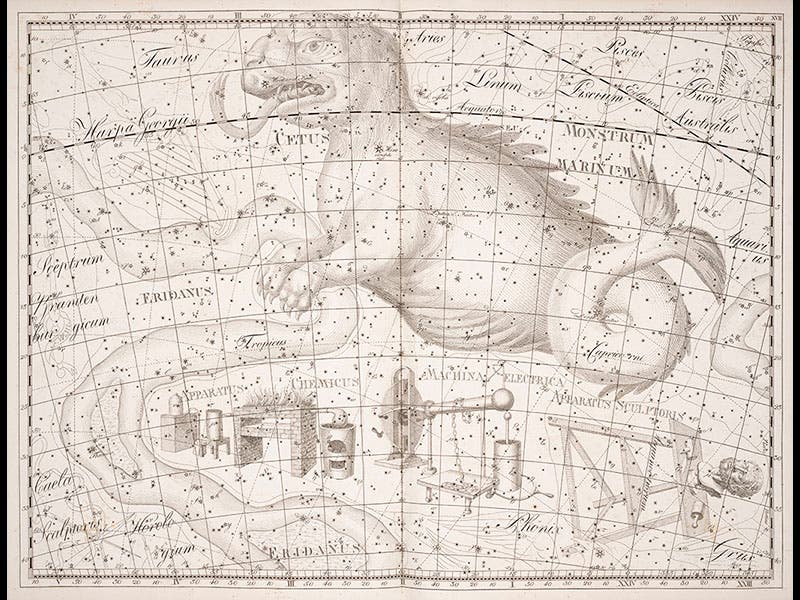Scientist of the Day - Nicolas Lacaille


Nicolas-Louis de Lacaille, a French astronomer, was born Mar. 15, 1713. In 1751, Lacaille went to South Africa and recorded the positions of thousands of southern stars. A number of new southern constellations, such as the Phoenix and the Toucan, had been created in the sixteenth century by voyagers to the southern seas, but now Lacaille had good reason to create even more, to enclose his newly observed stars. Rather than using mythological names, or the names of exotic birds or animals, he chose to honor the achievements of experimental science. Thus his new southern constellations include Microscopium, Antlia (the air pump), Horologium (the pendulum clock), Caelum (the engraver’s burin), and ten others. These were the last constellations to be added to the now-canonical list of 88 constellations; many later astronomers tried to suggest new ones, usually in the spaces between the old ones, but they all failed to gain acceptance. Lacaille made a map of the southern skies, locating his new constellations, and it was published in the Memoires of the Royal Academy of Sciences in Paris in 1752. We displayed this map in our 2007 exhibition, Out of This World.
The first image above shows a detail of Lacalle’s 1752 map that includes l’Horologe (Horologium), Montagne de la Table (Mensa), le Reticule (Reticulum), and le Cheval et l’Palette (Pictor). The second image shows the entire map. The astronomer Johann bode included all 14 of Lacaille’s new constellations in his large star atlas, Uranographia (1801). In details of several of his plates, we see: Pyxis nautica (the compass; third image), and Telescopium and Norma (the square, fourth image). The fifth image shows Bode’s complete plate of Cetus; at the bottom, you can see Fornax (the furnace) at bottom left, and Sculptor (the sculptor’s studio) at bottom right. In between is Machina electrica (the electrical generator), a new constellation that was not one of Lacaille’s, nor was it later accepted into the canon of official constellations.
Dr. William B. Ashworth, Jr., Consultant for the History of Science, Linda Hall Library and Associate Professor, Department of History, University of Missouri-Kansas City. Comments or corrections are welcome; please direct to ashworthw@umkc.edu.







![Using an astrolabe to measure the depth of a well, woodcut in Elucidatio fabricae vsusq[ue] astrolabii, by Johannes Stöffler, 1513 (Linda Hall Library)](https://assets-us-01.kc-usercontent.com:443/9dd25524-761a-000d-d79f-86a5086d4774/a998eb50-55d2-4a88-ace2-a50aa5fa86e7/Stoffler%201.jpg?w=210&h=210&auto=format&fit=crop)

